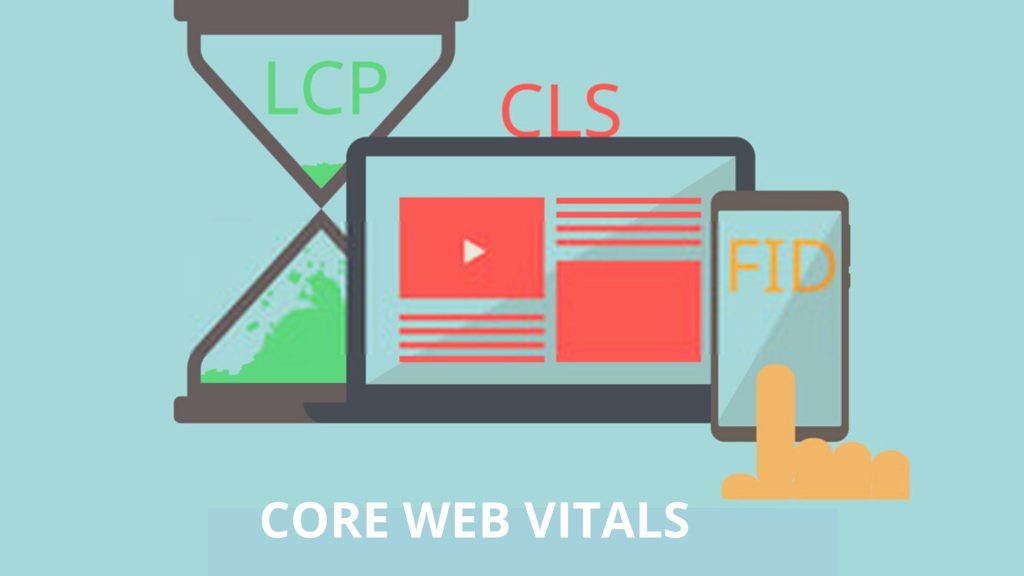Google earlier introduced new factors that it considers vitally important in enhancing the web page’s overall user experience. These factors are called the Core Web Vitals and will begin being used by Google in May 2021. Every website wants to achieve higher rankings on the search engine results. Nowadays, and it has been this way for a while, you cannot just simply achieve higher rankings only through keyword stuffing. Core Web Vitals are now another optimization to add.
So, the one big question that arises is how your website can get higher rankings on search engine results? Well, it depends on many factors, and one of Google’s main priorities is a positive user experience. The overall user experience plays a vital role for any website to dominate the search engine results.
Google developed Core Web Vitals to rank any website based on three essential factors that will determine any website or web page’s overall user experience. So, without any further delay, let’s start learning about core web vitals.

Core Web Vitals: An Overview
So, core web vitals are a set of factors used by Google to rank any website or web page. Google uses these factors to determine a user’s first impression or experience with a webpage. Also, through this scoring, publishers are able to see how engaging a webpage is for their users.
The more engaging the webpage is, the more it will benefit the publisher by improved ranking, optimized ads, and additional ad revenue generation. These factors use three important speed and user interaction measurements. These measurements are:
- Largest Contentful Paint (LCP)
- First Input Delay (FID)
- Cumulative Layout Shift (CLS)

Largest Contentful Paint (LCP):
Largest Contentful Paint measures the time it takes for the user to see the major portion of the content of the webpage after accessing the page.
Usually, 2.5 seconds is considered the ideal time for a website to load the major content on its webpage. If it takes longer than 2.5 seconds, that means the publisher needs to improve its LCP or loading time.
A loading time between 2.5 and 4 seconds shows that the website needs improvement in this regard. Whereas a loading speed of more than 4 seconds is considered poor, the website has to, undoubtedly, work on improving load speed.
There are various ways that publishers can use to optimize the loading speed of your website. You can render the client-side or can render – block JavaScript and CSS. By doing so, you can have a positive impact on the LCP.
Also, in order to optimize, you must have fast server response time and fast resource load time.
LCP is the most important factor when considering all of the user experience measurements. That is because it actually indicates how the user truly feels like when he interacts with a website.
First Input Delay (FID):
FID or First Input Delay is associated with the interactivity of the website with the user. It measures the time it takes for the website to respond or show results after a user interacts with the website. A user might interact with the website by clicking on a button or link present on the website.
A website has a good FID if it responds within less than 100 milliseconds. A website also needs to improve its FID if it takes time between 100 and 300 milliseconds to respond. If a website takes longer than 300 milliseconds to respond, then the user will have a poor experience and this certainly needs to be corrected.
If you want to optimize your FID of the website, then you can use the following methods:
- Try to decrease your JavaScript execution time by minimizing your JavaScript.
- You can also remove any third-party scripts that are not critical as they have a negative impact on FID.
- Workout on the interaction readiness of your website
- The browser will load content quickly if you use browser cache.
- You can break up the long tasks into smaller ones.
- You can use web workers to optimize the FID of your website.
Cumulative Layout Shift
Cumulative Layout shift is associated with the visual stability of the website. It tells you about how much a page is stable when it loads. CLS measures how much the elements of the webpage are stable.
If the web page elements move around a lot, that means that the CLS of the webpage is high, and that is certainly not good for your website or user experience.
So, your website’s elements must have to remain stable as the page load, and the CLS should be less than 0.1 to be considered good. Whereas CLS between 0.1 to 0.25 certainly needs improvement. And, a CLS higher than 0.25 is poor.
Don’t worry if your website has higher CLS. We have a few things that you can use to make sure that you obtain a lower CLS:
- Always make sure that the images, videos, GIFs, etc., that you use have set dimensions.
- Make reserved space for ad elements.
- Also, add new UI elements so that they do not push down the content.
How to View the Core Web Vitals Data:
You can check your website’s Core Web Vitals data by clicking the” enhancements” section of your Google Search Console Account.
Tools for Measuring Core Web Vitals
Using these Google available tools, publishers can see how Google measures their website performance in terms of user experience.
- Google Search Console
- PageSpeed Insights
- Lighthouse
- Chrome UX Report
- Web Vitals Extension
- Chrome Dev Tools
You can quickly check your Core Web Vitals data by:
- First of all, checking your core web vitals report through Google Search Console. Through this report, you will be able to know about the web pages that have to be improved.
- You can also use PageInsights in order to identify lab ad field issues of those web pages.
- Chrome DevTools and Lighthouse will also try to resolve the issues that have to be fixed.
- With the help of Lighthouse CI Tool, you can also check the core web vitals.
Conclusion
The best thing that you can do as a publisher right now is get to know your site’s core web vitals. And make sure that you are providing the best user experience. By providing a positive and engaging user experience, your website will be able to rank higher, driving more traffic.
Review your site for ways to optimize your website, making it more responsive, interactive, and engaging using the tools mentioned earlier.
At PubWise our mission is to improve publisher monetization and improving user experience and Web Core Vitals is a critical component of that effort. The sooner you learn to optimize your website for a positive and engaging user experience, the better it will be for both you and your readers in the future.





